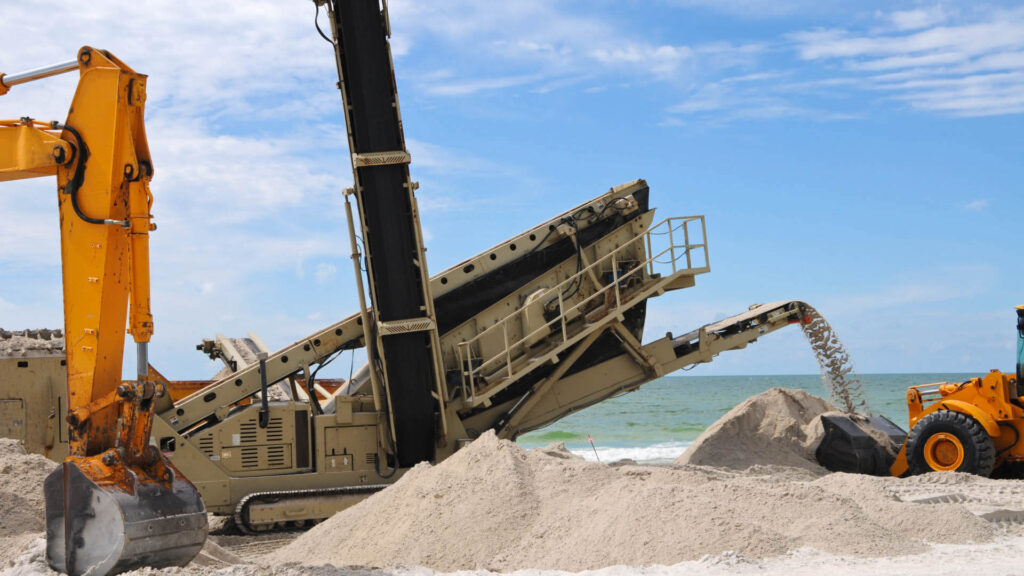Sand dredging is a crucial process in various industries, including construction, land reclamation, and environmental restoration. Sand dredging equipment ensures efficient excavation and removal of sediment from rivers, lakes, and other water bodies. By selecting the right dredging tools, operators can maximize efficiency, reduce operational costs, and minimize environmental impact.
Choosing the appropriate dredging equipment depends on several factors, including water depth, sediment type, and project scale. Different dredgers are designed for specific conditions, and using the wrong equipment can lead to inefficiencies or unnecessary wear. For projects involving moving water, river sand dredging equipment is essential for managing sediment transport and preventing blockages in navigation channels. These dredgers are built to handle high flow rates and shifting sand deposits.
Similarly, river sand dredging equipment differs from tools used in more stable environments like lakes. In still waters, lake dredging equipment is designed to remove accumulated sediment without causing excessive turbidity or ecological disruption. Understanding the differences between dredging equipment types is key to achieving optimal project outcomes. This blog will explore the various types of dredging equipment available and how to select the best tools for your specific dredging needs.
Understanding Sand Dredging and Its Applications
Sand dredging is vital in various industries, including construction, land reclamation, and environmental restoration. It involves removing and transporting sediment from water bodies to improve navigability, extract valuable materials, or restore aquatic ecosystems. The effectiveness of dredging equipment depends on project requirements such as sediment type, excavation depth, and environmental regulations.
Sand dredging supplies high-quality aggregates for concrete production and coastal reinforcement projects in construction. Land reclamation relies on dredging equipment to fill and stabilize land for urban expansion or erosion control. Environmental projects use dredging to remove contaminated sediments, restore wetland habitats, and maintain water quality.
However, sand dredging comes with challenges, including varying sediment composition, water depth, and potential environmental disruption. Fine-grained sediment can cause excessive turbidity, while coarse materials require robust dredgers for efficient removal. Water depth influences the choice of lake dredging equipment, as deeper sites need powerful suction dredgers, whereas shallow areas may require portable or mechanical dredgers.
Dredging in moving water presents additional complexities, making river sand dredging equipment essential for managing strong currents and preventing sediment buildup in navigation channels. In contrast, lake dredging equipment is often designed to minimize ecological disturbance, ensuring sediment removal without harming aquatic life.
By selecting the appropriate dredging equipment, operators can optimize efficiency, minimize costs, and effectively address project-specific challenges. Understanding these applications is key to achieving sustainable and successful dredging outcomes.
Mechanical Sand Dredging Equipment
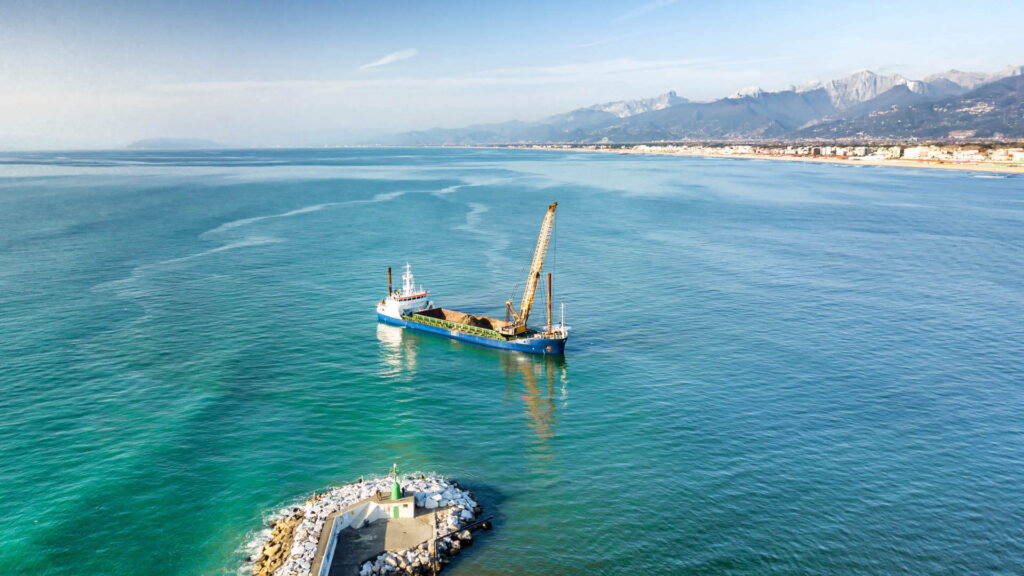
Mechanical dredgers are widely used in sand excavation due to their efficient removal of large quantities of sediment. Unlike hydraulic dredgers, mechanical dredging equipment physically scoops, lifts, and transports sediment using buckets or clamshells. These dredgers are particularly effective for projects requiring precise excavation, removal of compacted materials, or operation in environments where hydraulic dredging may not be suitable.
Common Types of Mechanical Dredgers:
- Clamshell Dredgers – These use a bucket with two hinged jaws to scoop and lift sediment. They are ideal for targeted excavation in harbors, lakes, and rivers where precision is required.
- Backhoe Dredgers – Similar to land-based excavators, these dredgers remove sediment using an articulated arm and a bucket. They are commonly used in controlled environments like docks and small-scale sand removal projects.
- Bucket Ladder Dredgers – These consist of a continuous chain of buckets that scoop sand and transport it via a conveyor system. This type of dredging equipment is effective for large-scale dredging in areas with compacted sediments.
Mechanical dredgers are often preferred for river dredging equipment, particularly when working in areas with high debris content or where precision excavation is necessary. They are also useful in lake dredging equipment applications where controlled sediment removal is required without excessive turbidity.
By selecting the right dredging equipment, operators can ensure efficient sand removal while minimizing environmental impact and operational costs. Thus, mechanical dredgers are a viable choice for various dredging projects.
Hydraulic Sand Dredging Equipment
Hydraulic dredgers are among the most efficient and widely used dredging equipment for large-scale excavation projects. Unlike mechanical dredgers, hydraulic dredgers use powerful suction systems to remove and transport sediment through pipelines. This method is ideal for continuous operations, as it enables large volumes of sand to be moved over long distances with minimal manual intervention.
Common Types of Hydraulic Dredgers:
- Cutter Suction Dredgers (CSD)—These dredgers feature a rotating cutter head that breaks up compacted sediments before suctioning them through a pipeline. They are highly effective for deepening channels and removing dense materials, making them a preferred choice for river sand dredging equipment in high-flow areas.
- Jet Suction Dredgers – These use high-pressure water jets to dislodge and lift sediments into a suction pipe. They are often used in shallow water projects, where a gentle excavation method is needed to prevent excessive turbidity, particularly in lake dredging equipment applications.
- Plain Suction Dredgers – These rely purely on suction power to lift loose sand and sediments. They are best suited for maintenance dredging and operations requiring minimal disruption to aquatic ecosystems.
Hydraulic dredgers are highly effective in lake dredging applications where precision and minimal ecological disturbance are required. They are also widely used as river sand dredging equipment, particularly in areas where consistent sediment removal is necessary to maintain navigability. By selecting the right dredging equipment, operators can maximize efficiency while minimizing environmental impact.
Specialized Dredging Equipment for Different Environments
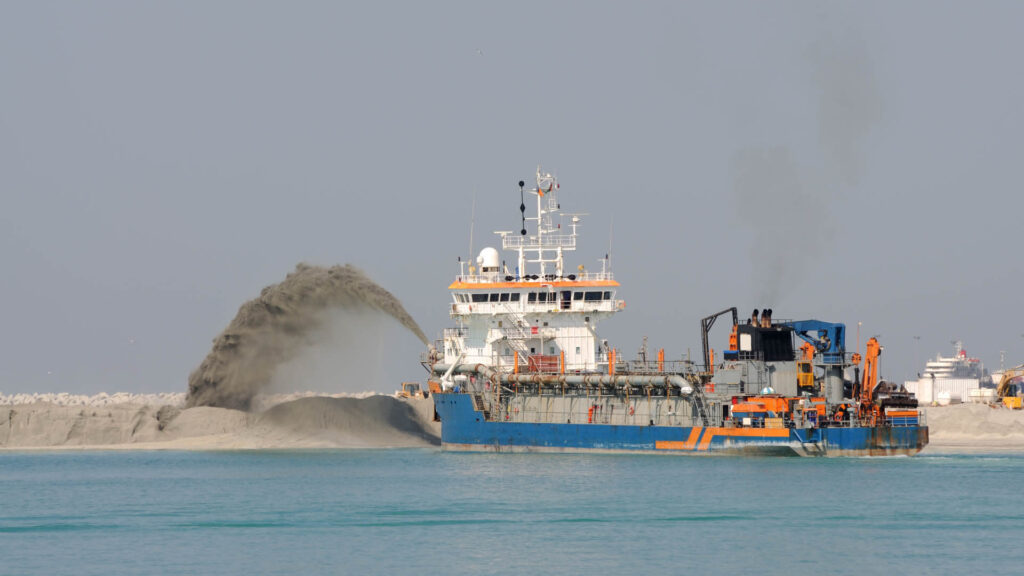
Dredging projects vary significantly based on water conditions, sediment type, and accessibility. Selecting the right dredging equipment for a specific environment ensures efficiency and minimizes disruptions. Whether working in fast-flowing rivers, still lakes, or confined spaces, specialized dredgers are designed to meet the unique demands of each setting.
River Sand Dredging Equipment for Flowing Water
Dredging in rivers presents challenges such as shifting sediments, strong currents, and the need to maintain navigability. River sand dredging equipment is specifically designed to handle these conditions, ensuring continuous sediment removal without disrupting water flow. Cutter suction dredgers (CSD) and plain suction dredgers are commonly used due to their ability to extract and transport sand efficiently over long distances. These dredgers prevent sediment buildup that could lead to blockages in navigation channels or cause erosion issues downstream.
Lake Dredging Equipment for Water Depth Maintenance
Lakes often suffer from sediment accumulation, which can reduce water depth and impact aquatic ecosystems. Lake dredging equipment is designed to remove sand and organic matter without causing excessive turbidity. Jet suction dredgers and small cutter suction dredgers are commonly used to maintain depth while protecting fish habitats and water quality. These machines are ideal for maintaining reservoirs, recreational lakes, and stormwater retention ponds.
Portable and Small-Scale Dredgers for Limited-Access Areas
Portable and small-scale dredging equipment is essential for projects in narrow channels, marinas, or private ponds. These lightweight, mobile dredgers allow operators to work in restricted areas where large dredgers cannot. With the right river sand dredging equipment or lake dredging equipment, operators can efficiently manage sediment removal in any environment.
Key Factors in Selecting the Right Dredging Equipment
Choosing the right dredging equipment is essential for ensuring efficiency, cost-effectiveness, and environmental compliance. Several factors must be evaluated, including project scope, environmental considerations, and budget constraints. By carefully assessing these elements, operators can select the most suitable river sand dredging equipment or lake dredging equipment for their specific needs.
Project Scope: Depth, Volume, and Material Type
The first step in selecting dredging equipment is determining the project’s scope. Factors such as water depth, the volume of material to be removed, and the type of sediment play a critical role in equipment selection. For deep excavation projects, cutter suction dredgers (CSD) or bucket ladder dredgers are effective. In contrast, jet suction or plain suction dredgers are ideal for softer, looser sediments in lakes or shallow rivers. River sand dredging equipment must also account for strong currents and sediment transport challenges.
Environmental Considerations: Turbidity and Sediment Displacement
Dredging can significantly impact water quality and aquatic ecosystems. Regulatory compliance and sediment control are crucial when selecting lake dredging equipment or river-based dredgers. Lakes require gentle dredging solutions such as jet suction dredgers to prevent excessive turbidity, while rivers often require more robust equipment to manage sediment flow.
Budget and Operational Costs
The cost of dredging equipment includes fuel efficiency, maintenance, and transportation. Lake dredging equipment for small-scale projects tends to have lower operational costs, while large river sand dredging equipment may require higher fuel consumption and maintenance. Assessing long-term expenses ensures an efficient and cost-effective dredging operation.
Innovations and Emerging Technologies in Sand Dredging
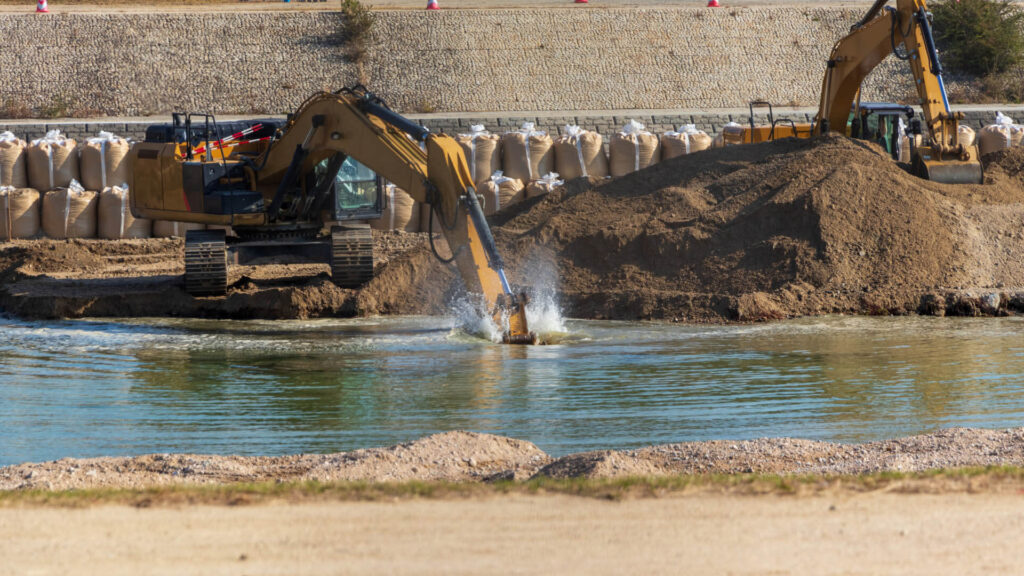
The dredging industry is continuously evolving, with modern advancements improving efficiency, precision, and environmental sustainability. Technological innovations in dredging equipment are transforming project execution, making operations more cost-effective and eco-friendly. Automation, GPS integration, and sustainable dredging solutions are revolutionizing river sand dredging equipment and lake dredging equipment.
Automation and Remote-Controlled Dredgers for Improved Efficiency
Automation is reshaping dredging operations by reducing the need for manual intervention. Remote-controlled dredgers allow operators to manage excavation from a control center, improving safety and precision. These advancements in dredging equipment ensure consistent performance while reducing labor costs. Autonomous dredgers equipped with AI-driven navigation systems optimize sediment removal, especially in challenging river and lake environments.
The Role of GPS and Real-Time Monitoring
GPS technology has enhanced the accuracy of river sand dredging equipment, allowing operators to track dredging locations and ensure optimal excavation precisely. Real-time monitoring systems collect data on sediment flow, water depth, and pump performance, enabling operators to make immediate adjustments. These tools are also crucial for lake dredging equipment, helping maintain desired water depths while minimizing environmental disturbance.
Sustainable and Eco-Friendly Dredging Solutions
With increasing environmental regulations, dredging companies are adopting sustainable practices. Electric-powered dredging equipment reduces emissions, while silt curtains and sediment filtration systems minimize turbidity. In both river sand and lake dredging equipment, energy-efficient pumps and eco-friendly excavation techniques help protect aquatic ecosystems while maintaining effective sediment management.
Conclusion
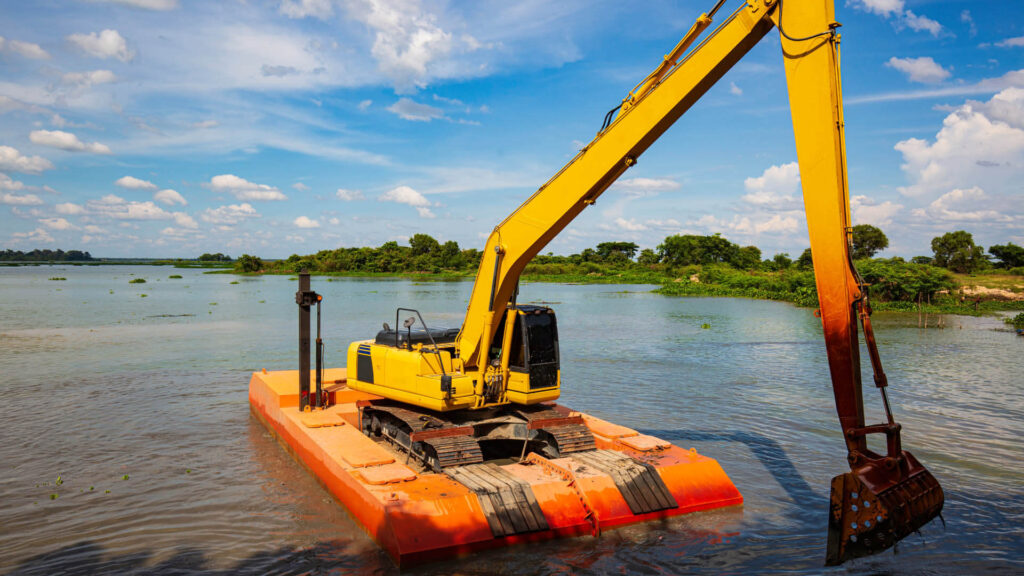
Selecting the right dredging equipment is crucial for ensuring efficient, cost-effective, and environmentally responsible dredging operations. Factors such as project scope, sediment type, and water conditions play a significant role in determining whether mechanical or hydraulic dredgers are the best fit. Advanced technologies, including automation, GPS monitoring, and energy-efficient pumps, have further improved the performance of modern sand dredging equipment, making dredging more precise and sustainable.
Choosing the appropriate tools for the job is essential to maintaining productivity while minimizing operational costs. River sand dredging equipment is specifically designed to handle fast-moving water, shifting sediments, and high-volume excavation, ensuring smooth navigation and effective sediment management in rivers. On the other hand, lake dredging equipment is optimized for maintaining water depth, restoring ecosystems, and carefully removing sediment with minimal disruption to aquatic life.
For long-term success, investing in high-quality, technologically advanced dredging equipment is essential. Whether for large-scale river maintenance or small-scale lake restoration, modern dredging solutions improve efficiency, reduce environmental impact, and extend equipment lifespan. By adopting the latest innovations in river sand dredging equipment and lake dredging equipment, operators can enhance project outcomes and ensure sustainable sediment management for years to come.

